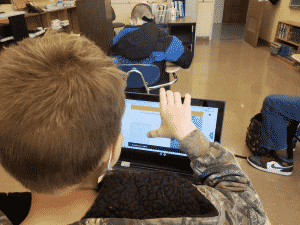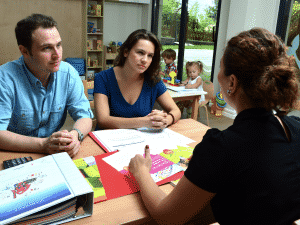Research in Practice- Strategic Collaboration: Parent Engagement

Spotlight – Stories from the Field
Sadiqa Al-Salam, Prince George’s County Public Schools
Ms. Al-Salam’s Challenge: How can I engage with parents across different service delivery models?
Engaging parents during virtual instruction was a challenge faced by many educators. At a Prince George’s County Middle School, special educator, Ms. Al-Salam, sought out ways to involve parents that staff had been unable to reach. She began collecting data from teachers, analyzing it and putting it together for parents to review in a confidential manner. She invited parents to attend a meeting each grading period. As an incentive for parents to join these meetings, she and her co-teacher offered extra credit to their students. Initially, she strategically planned with her grade level content team and then extended the strategy and model to include other grade levels. Eventually she began collaborating with the school counselors for two grade levels to conduct a series of meetings.
By preparing student data, she was able to assist families to understand its meaning. She was able to address individual students’ support needs, especially those who were falling behind and in jeopardy of failing. Other outcomes included getting parents to log in to school platforms for the first time and gathering current parent contact information. She polled parents during the meetings and found all parents found the information provided as helpful. Just over half of parents were pleased with their students’ performance in History, and just under half were not pleased. Around a third of parents had logged in to Google to check on student progress. Approximately 20% of parents attending had students receiving accommodations. Ms. Al-Salam’s idea was well received by administration and she was asked to share her process with other teachers in her building so they could likewise engage parents.
Implementation Plan
Time:
- It takes some time to include specific data into the PowerPoint
- The presentation itself takes one hour a month.
Materials/Resources:
- PowerPoint Template
- Poll Questions
- Designated time at faculty meeting to explain the process
- Input from classroom teachers regarding their class expectations
- Data from teachers regarding students and parents, agreement to incentivize students to invite parents with extra credit
- Monitoring and implementation of data collection
- Recording of the presentation, or an alternate method to get information to parents who cannot attend
Steps:
- Gather student data:
- This will come from general education teacher, subject specific teachers, special education teachers
- Prepare your PowerPoint using the template provided:
- Input data into the presentation based on codes to keep information anonymous, email parents their specific code for their student
- Prepare poll questions ahead of time
- Send out invitations to parents, let them know extra credit will be given for attendance
- Communicate with students that their parents have been invited and they will receive extra credit for attending
- Prepare Zoom logistics:
- Develop Zoom poll questions ahead of time
- Use a registration form and collect data from registrants (prepare ahead of time); this is a great way to get current contact information from parents
- Template of poll questions is available; it is being shared and used with other professionals
- Have Zoom meeting:
- Make sure parents have a way to sign in so students get their extra credit
- Share interventions and strategies to support struggling students and encourage those students experiencing success
- Provide list of established resources and share information regarding class structure and what is needed for student success
- Share any plan developed for students needing support and include a schedule
- Share actions parents can take to monitor and support student success
- Data is shared with parents via a code so they can view their own child’s data confidentially; unidentifiable aggregate data could be shared during the meeting
- Share relevant school or district updates
- Have follow up meeting with staff to check data and see if changes have happened with students based on parent participation; troubleshoot reaching parents who did not attend
- Progress monitor students with IEPs to make sure data continues to be tracked and changes are made when appropriate
Implications for Practice/Conditions for Success
- In order for this strategy to work, one person needs to take ownership to follow through with the steps
- It is very helpful if there is administrator support
- These meetings helped parents log in to the school based technology platforms for the first time
Supporting Research and Resources
Apostolakis, C. (2007). Strategy for Collaboration: An Operational Framework for Local Strategic Partnerships. Retrieved from: http://eprints.bournemouth.ac.uk/17298/1/C_Apostolakis_-_Paper_on_Collaborative_Strategy.pdf*
Haynes, R., & Ghosh, R. (2008). Mentoring and succession management: An evaluative approach to the strategic collaboration model. Review of Business, 28(2), 3–12.
Häkkinen, P., Järvelä, S., Mäkitalo-Siegl, K., Ahonen, A., Näykki, P., & Valtonen, T. (2017). Preparing teacher-students for twenty-first-century learning practices (PREP 21): a framework for enhancing collaborative problem-solving and strategic learning skills. Teachers and Teaching, Theory and Practice, 23(1), 25–41. https://doi.org/10.1080/13540602.2016.1203772
*This pdf is not 100% accessible and is not a required resource.









